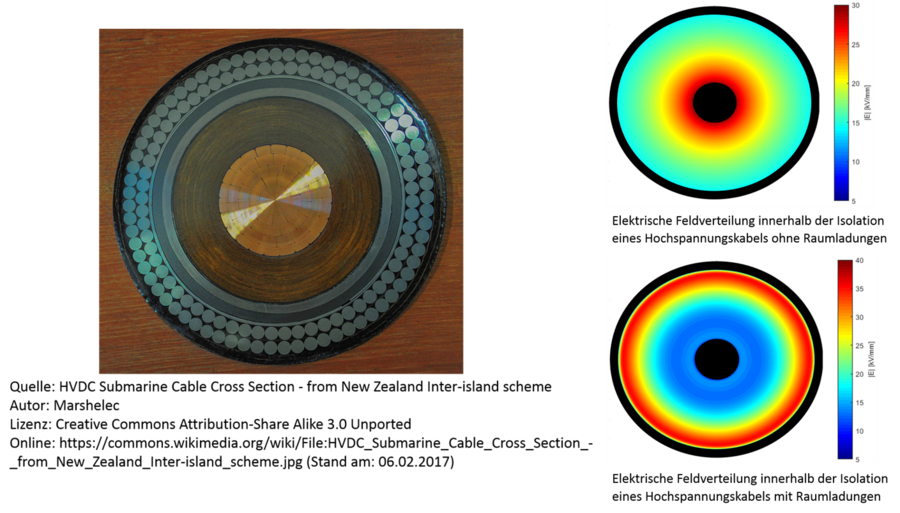German Research Foundation (DFG) Approves Collaborative Research Centre
German Research Foundation (DFG) Approves Collaborative Research Centre
The shift towards decentralized renewable energy sources in the context of the energy transition is related to the planned expansion of electric power grids through underground cables for High-Voltage Direct Current (HVDC) transmission.
Modern HVDC underground cables and their connection components contain polymeric insulating materials with excellent insulating properties, but with the disadvantage of forming electrical space charges. These charges act as sources of electric fields and can -- in extreme cases -- cause an exceeding of the electric breakdown field strength in the insulating materials. The resulting damage to the insulating material can lead to a short circuit and thus to a cost-intensive outage of the affected power cable. In order to prevent potential damage and thus ensure the reliability of the equipment, a detailed knowledge of the electric field distribution is necessary. This can be determined using numerical simulation methods. The simulation of the electric field distribution in a power cable can be considered as an electro-quasistatic problem, since it may take days or weeks for a time-constant space charge distribution to form in the insulating material.
In this research project, the physical fundamentals of the behavior of such electrical charge distributions in insulating materials of HVDC underground cables are investigated. From this, improved high-resolution three-dimensional computer simulation models shall be developed to calculate the electrical and thermal behavior of HVDC cable systems in a near-real environment and optimize them by using novel electric field-controlling insulation materials.
